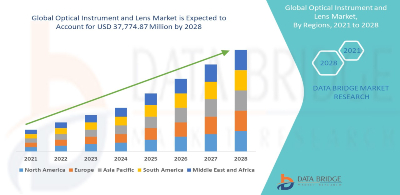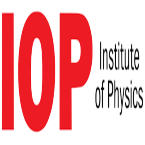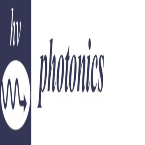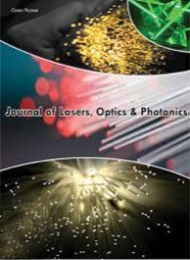Theme: An insight into the recent research and cutting-edge technologies in Lasers, Optics and Photonics
LASER OPTICS 2023
Conference Series is delighted to host the “European Congress on Laser, Optics and Photonics” (Laser Optics 2023) which will be held as Webinar during September 18-19, 2023 spanning a broad spectrum of laser, optics and photonics, and will provide a unique opportunity to exchange ideas and showcase the latest achievements in these areas.
Theme: "An insight into the recent research and cutting-edge technologies in Lasers, Optics and Photonics"
|
Conference Short Name |
Dates |
Webinar |
|
WebEx Platform |
Laser Optics 2023 will provide exposure to the world scientist, industry experts, researchers, young researchers, Academic experts, business experts, and students being part of the summit. The conference will offer plenary and invited talks, contributed oral and poster presentations, special sessions, tutorials, and exhibitions of commercial products. Social and cultural events will also foster networking among the participants in a friendly manner.
We’re looking forward to an excellent meeting with scientists from different countries around the world and sharing new and exciting results in Laser, Optics and Photonics.
Why choose us: Develop Network for Better Progress
- Connect, Share and Learn
- Present your Ideas and Work
- Gain New Collaborations with attendees from different countries from whole over the world
- Expand your knowledge
- Learn Beyond your Field or Interest
- Increase your Scope of Knowledge with Competitive Advantage
- Real networking
Who can attend:
- For laser optics Specialist
- Laser Researchers/ Scientist Optics and photonics students
- Directors of Photonics companies
- Photonic Engineers
- Members of different Lasers optics and photonics associations/ societies
Track 01: Laser and Its Types
A laser is a device that emits light as a laser beam. A laser beam differs from a light beam in that its rays are collimated, coherent (of the same frequency and waveform), and monochromatic (of a single colour) (going in the same direction). Lasers deliver this "precise information," which makes them the best choice for applications requiring high precision. The term "Laser" stands for Light Amplification by Stimulated Emission of Radiation. A laser produces energy in the form of light that is in or very near the optical region of the electromagnetic spectrum. Through an atomic process known as stimulated emission, the laser energy is amplified to an exceedingly high intensity.
Properties of laser light: Unlike other forms of light, laser light has special properties which make it significantly more effective and dangerous than conventional light of the same power. The laser light particles (photons) are usually:
- Monochromatic: consisting of a single wavelength or colour
- Coherent: photons are in phase (like marching soldiers)
- Collimated: photons are almost in parallel (aligned), with little divergence from the point of origin
These laser types fall into four categories: gas, liquid, semiconductor, and solid-state.
Related Global Conferences:
Laser Optics & Photonics Conference | International Conference on Laser Optics and Photonics | OPL 2023 | OPTICSMEET2023 | Photonics Conferences 2023 | Euro Optics 2023
Related Professional/Technical Organizations and Societies:
International Laser Display Association | Laser Institute of America | Optical Society of America | The International Society for Optical Engineering | European Optical Society | Photonics Industry & Technology Development Association
Track 02: Fiber Laser Technology
A fibre laser is a laser with an optical fibre doped with rare-earth elements such as erbium, ytterbium, neodymium, dysprosium, praseodymium, thulium, and holmium as the enthusiastic pickup medium. Fiber lasers are unique from other laser types for the most part. A fibre laser is a type of laser in which the pillar and the laser depression are combined into a single framework inside an optical fibre, with the pillar created within the fibre. They share a connection with doped fibre amplifiers, which amplify light without lasing. In order to act as gain media for a fibre laser, fibre nonlinearities such stimulated Raman scattering and four-wave mixing can also produce gain.
Related Global Conferences:
Laser Optics & Photonics Conference | International Conference on Laser Optics and Photonics | OPL 2023 | OPTICSMEET2023 | Photonics Conferences 2023 | Euro Optics 2023
Related Professional/Technical Organizations and Societies:
International Laser Display Association | Laser Institute of America | Optical Society of America | The International Society for Optical Engineering | European Optical Society | Photonics Industry & Technology Development Association
Track 03: Lasers in Medicine
The use of lasers in medical diagnosis, treatments, or therapies, such as PDT, is known as laser medicine. After light activation, photodynamic therapy (PDT) is a two-stage treatment that combines light energy with a medication (photosensitizer) to kill malignant and precancerous cells. Initial laser beam tests revealed that a precisely focused beam from a carbon dioxide gas laser could effortlessly and skillfully cut through human flesh. As a result, the beam is the ideal equipment for performing difficult surgeries as a backup to the traditional blade. Lasers were thought to be most effective in working on portions of the body that are easy to reach, such as the ears, skin, lips, eyes, and nose.
Related Global Conferences:
Laser Optics & Photonics Conference | International Conference on Laser Optics and Photonics | OPL 2023 | OPTICSMEET2023 | Photonics Conferences 2023 | Euro Optics 2023
Related Professional/Technical Organizations and Societies:
International Laser Display Association | Laser Institute of America | Optical Society of America | The International Society for Optical Engineering | European Optical Society | Photonics Industry & Technology Development Association
Track 04: Laser Ablation of Polymers
Processing of polymers has developed into a significant area of applied and basic research during the past ten years. One of the most significant areas is laser ablation, which involves a variety of techniques and applications. Inorganic materials and synthetic polymer films are prepared for PLD (pulsed laser deposition) using laser ablation, which is also utilized as an analytical technique for MALDI (matrix-assisted laser desorption/ionization) and LIBS (laser-induced breakdown spectroscopy). Surface modification of polymers is another application. If modest fluencies are used, the surface of the polymer can be altered physically or chemically to increase adherence. This may result in a chance increase in surface area or LIPMS (laser-induced periodic microstructures in the nm range), which have been reported to have potential benefits. In 1982, the process known as ablative photodecomposition (APD) was discovered thanks to lasers. The idea of using APD as a dry etching method in photolithography was one of the more intriguing ones. Due to the use of a shorter laser wavelength compared to conventional UV lamp (Hg-lamp) approaches, APD offered a higher resolution and fewer processing steps.
Related Global Conferences:
Laser Optics & Photonics Conference | International Conference on Laser Optics and Photonics | OPL 2023 | OPTICSMEET2023 | Photonics Conferences 2023 | Euro Optics 2023
Related Professional/Technical Organizations and Societies:
International Laser Display Association | Laser Institute of America | Optical Society of America | The International Society for Optical Engineering | European Optical Society | Photonics Industry & Technology Development Association
Track 05: Optical Physics
The science of light's fundamental properties and its interactions with matter is known as optical physics. Common optical phenomena including reflection, refraction, diffraction, and interference can be found here. It includes research on vision. These include optical physics, applied optics, and optical engineering among them, as well as general optics and optical engineering. Basic research in optical physics, which leads to the development of new devices and applications, requires the use of applied optics and optical engineering equipment. Optical physics is the study of the production of electromagnetic radiation, its characteristics, and its interactions with matter, especially its manipulation and control. The development of lasers and laser spectroscopy has altered optical science. Hot subjects in optical physics include femtosecond optics, quantum optics, and coherence. Optical physics provides evidence for the atom-cavity interaction at high fields, the nonlinear response of single atoms to strong, ultra-short electromagnetic fields, and the quantum characteristics of the electromagnetic field.
Related Global Conferences:
Laser Optics & Photonics Conference | International Conference on Laser Optics and Photonics | OPL 2023 | OPTICSMEET2023 | Photonics Conferences 2023 | Euro Optics 2023
Related Professional/Technical Organizations and Societies:
International Laser Display Association | Laser Institute of America | Optical Society of America | The International Society for Optical Engineering | European Optical Society | Photonics Industry & Technology Development Association
Track 06: Optical Fiber
A flexible, see-through fibre made of silica glass or plastic with a diameter slightly larger than that of a human hair is known as an optical fibre. The wave guide is comprised of translucent dielectrics and is used for optical communication. Optical fibres are widely employed in fiber-optic communications and are primarily utilized to transfer light between the two ends of the fibre.
Types of Fiber optics:
- On the basis of the Number of Modes
- Single-mode fiber
- Multi-mode fiber
- On the basis of Refractive Index
- Step-index optical fiber
- Graded index optical fiber
Related Global Conferences:
Laser Optics & Photonics Conference | International Conference on Laser Optics and Photonics | OPL 2023 | OPTICSMEET2023 | Photonics Conferences 2023 | Euro Optics 2023
Related Professional/Technical Organizations and Societies:
International Laser Display Association | Laser Institute of America | Optical Society of America | The International Society for Optical Engineering | European Optical Society | Photonics Industry & Technology Development Association
Track 07: Bio and Medical Optics
Biomedical optics is a branch of optics that focuses on the use of light in biological research and medicine, as well as the creation of the optical tools required to do so. Optics, lasers, and information technology have recently made biomedical imaging faster and less expensive, as well as reducing the need for surgery. The study of how light is directed into biological tissues is known as biomedical. Laser and optics biomedical technologies include biological research, medical diagnostics, and therapeutic applications.
- Biosensors
- Nonlinear Optical Microscopes
- Image Restoration
- Photodynamic Therapy
- Super-Resolution of Retinal Images
- Novel Sources for Multiphoton Microscopy
- Optical Coherence Tomorgraphy and Microscopy
- Fluorescence Imaging of Gene Expression
Related Global Conferences:
Laser Optics & Photonics Conference | International Conference on Laser Optics and Photonics | OPL 2023 | OPTICSMEET2023 | Photonics Conferences 2023 | Euro Optics 2023
Related Professional/Technical Organizations and Societies:
International Laser Display Association | Laser Institute of America | Optical Society of America | The International Society for Optical Engineering | European Optical Society | Photonics Industry & Technology Development Association
Track 08: Optoelectronics & Devices
Optoelectronics is a rapidly expanding technology sector in which electronic devices are used to source, detect, control, and mechanise light. Electronic devices for emitting, modulating, transmitting, and sensing light are included in this discipline of electronics. The quantum mechanical effects of light on electronic materials, semiconductors, and in the presence of electric fields are the basis of optoelectronics. Electrical-to-optical or optical-to-electrical transducers are optoelectronic devices. It is in the sphere of technology that light is linked to power. Optoelectronic devices are crucial parts of solid state lighting systems, optical communication systems, and power production systems. Examples include light emitting diodes (LEDs), semiconductor lasers, photodetectors, optical fibres, and solar cells.
Optoelectronics Technologies:
- electrical signals
- photon signals
- quantum mechanical
- semiconductors
- fiber optic communications
Examples of optoelectronic devices are:
- Laser diodes, super luminescent diodes and light-emitting diodes (LEDs), converting electrical energy to light
- Photo detectors (e.g. photodiodes and phototransistors), converting optical signals into electrical currents
- Imaging detectors, based on electronic image sensors
- Electro-optic modulators, used for manipulating the power, phase or polarization of light with an electrical control signal
- Electroabsorption modulators
- Opto-isolators for transmitting analog or digital signals while maintaining electric isolation
- Photonic integrated circuits, hosting electrical and optical components on some kind of chip (see also: silicon photonics)
- photoemissive detectors such as phototubes and photomultipliers, also image intensifiers
Related Global Conferences:
Laser Optics & Photonics Conference | International Conference on Laser Optics and Photonics | OPL 2023 | OPTICSMEET2023 | Photonics Conferences 2023 | Euro Optics 2023
Related Professional/Technical Organizations and Societies:
International Laser Display Association | Laser Institute of America | Optical Society of America | The International Society for Optical Engineering | European Optical Society | Photonics Industry & Technology Development Association
Track 09: Micro opto electro mechanical system
Microoptoelectromechanical systems (MOEMS), commonly referred to as optical MEMS, are integrations of mechanical, optical, and electrical systems that deal with sensing or modifying optical signals at a very tiny scale. A wide range of devices are included in MOEMS, such as optical switches, optical cross-connects, tenable VCSELs, and micro bolometers. These devices are typically made with silicon, silicon dioxide, silicon nitride, and gallium arsenide using micro-optics and conventional micromachining techniques. There are numerous MOEMS (micro-opto-electro-mechanical systems) devices being developed right now. MEMS optical switches that can be employed in optical networks for broadband communication are of particular commercial interest (Bell Laboratories 1999). The DMD (a MEMS projector created by Texas Instruments, Van Kessel et al. 1998) will be discussed as a MOEMS product that is now on the market.
Related Global Conferences:
Laser Optics & Photonics Conference | International Conference on Laser Optics and Photonics | OPL 2023 | OPTICSMEET2023 | Photonics Conferences 2023 | Euro Optics 2023
Related Professional/Technical Organizations and Societies:
International Laser Display Association | Laser Institute of America | Optical Society of America | The International Society for Optical Engineering | European Optical Society | Photonics Industry & Technology Development Association
Track 10: Optics in Medicine
Optical fibre medical equipment may have optical fibre bundles. Endoscope is optical fibre equipment that is used to see the inner workings of the human body. The endoscope allows surgeons to view into the body without having to perform surgery.
Related Global Conferences:
Laser Optics & Photonics Conference | International Conference on Laser Optics and Photonics | OPL 2023 | OPTICSMEET2023 | Photonics Conferences 2023 | Euro Optics 2023
Related Professional/Technical Organizations and Societies:
International Laser Display Association | Laser Institute of America | Optical Society of America | The International Society for Optical Engineering | European Optical Society | Photonics Industry & Technology Development Association
Track 11: Surface Enchanced Spectroscopy
SERS (Surface Enhanced Raman Spectroscopy) is a surface-sensitive technique for enhancing Raman scattering by molecules absorbed on rough metal surfaces or nanostructures such plasmonic magnetic silica nanotubes. Surface Enhanced Raman Scattering is another name for it. SERS substrates can identify proteins in physiological fluids since they are utilized to detect the presence of low abundance bio molecules. SERS has been used to detect urea and blood plasma label-free in human serum, and it could be the next step in cancer detection and screening. SERS is a technique for determining molecular system structural information. It's used in a variety of fields, including ultrasensitive chemical sensing and environmental studies.
Related Global Conferences:
Laser Optics & Photonics Conference | International Conference on Laser Optics and Photonics | OPL 2023 | OPTICSMEET2023 | Photonics Conferences 2023 | Euro Optics 2023
Related Professional/Technical Organizations and Societies:
International Laser Display Association | Laser Institute of America | Optical Society of America | The International Society for Optical Engineering | European Optical Society | Photonics Industry & Technology Development Association
Track 12: Quantum Thermodynamics
The study of the interactions between thermodynamics and quantum mechanics is known as quantum thermodynamics. The two distinct theories discuss the fundamental properties of matter and light. Albert Einstein made the claim in 1905 that the need for consistency between electromagnetism and thermodynamics leads to the conclusion that light is quantized, so achieving the connection. The beginning of quantum theory is this publication. In a few decades, quantum theory developed its own set of recognized laws. At the moment, quantum thermodynamics deals with how thermodynamic laws come from quantum mechanics. In that it places more focus on dynamical processes out of equilibrium, it varies from quantum statistical mechanics. There is also an effort to make the theory applicable to a single quantum system.
The significance of quantum thermodynamics: By combining recent advancements in both domains, the study of quantum thermodynamics seeks to bridge the gap between the small world of quantum mechanics and the vast classical equilibrium world of thermodynamics.
Related Global Conferences:
Laser Optics & Photonics Conference | International Conference on Laser Optics and Photonics | OPL 2023 | OPTICSMEET2023 | Photonics Conferences 2023 | Euro Optics 2023
Related Professional/Technical Organizations and Societies:
International Laser Display Association | Laser Institute of America | Optical Society of America | The International Society for Optical Engineering | European Optical Society | Photonics Industry & Technology Development Association
Track 13: Quantum Optics and Photonics
The study of how individual units of light, or photons, interact with atoms and molecules is known as quantum optics. This includes researching photons' particle-like characteristics. It is helpful for both quantum communication and quantum information processing. It applies to both straightforward and intricate quantum systems, including atoms and molecules. Long-distance quantum teleportation between atomic systems has been established by recent research.
Quantum photonics is the science of creating, controlling, and detecting light in regimes where individual quanta of the light field may be coherently controlled (photons). Integrated quantum photonics offers a possible method for scaling up and miniaturising optical quantum circuits. Quantum technology, such as quantum computing, quantum communication, quantum simulation, quantum walking, and quantum metrology, is a prominent application of integrated quantum photonics. Integrated quantum photonics is the application of photonic integrated circuit technology to quantum photonics, and it is regarded as a crucial step in the development of practical quantum technology. Compared to bulk optics, photonic chips have the following advantages:
1. Miniaturization - Smaller system sizes result in significant reductions in size, weight, and power consumption.
2. Stability - Waveguides and components manufactured using modern lithographic processes are phase stable (coherent) and do not require optical alignment.
3. Experiment size - A device of a few square centimetres can accommodate a large number of optical components.
4. Manufacturability - Devices may be mass produced with minimal cost increase.
Related Global Conferences:
Laser Optics & Photonics Conference | International Conference on Laser Optics and Photonics | OPL 2023 | OPTICSMEET2023 | Photonics Conferences 2023 | Euro Optics 2023
Related Professional/Technical Organizations and Societies:
International Laser Display Association | Laser Institute of America | Optical Society of America | The International Society for Optical Engineering | European Optical Society | Photonics Industry & Technology Development Association
Track 14: Quantum Science and Technology
Quantum mechanics, a branch of science that studies the physics of subatomic particles and includes concepts like quantum entanglement and quantum superposition, is used by a subset of technology known as quantum technology. Quantum sensors are likely to be used in a variety of fields, including geophysics, positioning systems, communication technologies, electric and magnetic field sensors, and geophysical disciplines including civil engineering and seismology. Using theoretical computer science, atomic physics, and optics, the field of quantum science and devices develops new ideas and hardware for data processing and communications. Quantum physics, as well as quantum entanglement and quantum superposition, are all used in the field of quantum technology. It is built on the capacity to control specific quantum systems to take advantage of events. Quantum photonics seeks to reveal the fundamental characteristics of quantum mechanisms and contribute to the creation of future photonic quantum technologies. It does this by manipulating, creating, and computing single photons as well as quantum systems that emit photons. It depends on advances in nanotechnology and is supported by them. It can function by manipulating matter at incredibly small scales.
- Quantum computing
- Quantum sensors
- Quantum cryptography
- Quantum simulation
- Quantum metrology
- Quantum imaging
Related Global Conferences:
Laser Optics & Photonics Conference | International Conference on Laser Optics and Photonics | OPL 2023 | OPTICSMEET2023 | Photonics Conferences 2023 | Euro Optics 2023
Related Professional/Technical Organizations and Societies:
International Laser Display Association | Laser Institute of America | Optical Society of America | The International Society for Optical Engineering | European Optical Society | Photonics Industry & Technology Development Association
Track 15: Nano Photonics and Bio Photonics
Nanophotonics is the study of light's effects on the nanoscale scale and how light interacts with matter at that scale. Optics, optical engineering, electrical engineering, and nanotechnology all fall under the umbrella of Nano Photonics. Surface Plasmon polaritons can transport and focus light via dielectric structures such as nano antennas or metallic components. Photonic crystal devices, such as dielectric nanophotonic structures and electronics, enabling wavelength-scale light manipulation.
Bio Photonics is the study and application of optical techniques, primarily for imaging. The study of biological molecules, cells, and tissues is referred to as biology. It is a multidisciplinary field that studies the interaction of electromagnetic radiation with biological materials in living creatures, such as tissues, cells, subcellular structures, and chemicals. Bio photonics is a technique that uses a beam of light, such as a laser or an LED, to allow surgeons to view how cells and tissues work. For diagnosis, treatment, and surgery, this light approach provides a sample of damaged and healthy tissue.
Related Global Conferences:
Laser Optics & Photonics Conference | International Conference on Laser Optics and Photonics | OPL 2023 | OPTICSMEET2023 | Photonics Conferences 2023 | Euro Optics 2023
Related Professional/Technical Organizations and Societies:
International Laser Display Association | Laser Institute of America | Optical Society of America | The International Society for Optical Engineering | European Optical Society | Photonics Industry & Technology Development Association
Track 16: Photonics In Artificial Intelligence
Photonics supports AI by enabling ultrafast AI networks and a new class of information processing machines (IPM). Optoelectronic component expansion on photonic integration platforms has fueled the growth of phonotic computing. Nanophotonics, Optical Neural Networks (ONN), and Neuro-morphic Electronic Systems all contribute to photonics' role in AI. It desperately has to pick up the pace to fulfill its potential, including that of driverless vehicles.
Related Global Conferences:
Laser Optics & Photonics Conference | International Conference on Laser Optics and Photonics | OPL 2023 | OPTICSMEET2023 | Photonics Conferences 2023 | Euro Optics 2023
Related Professional/Technical Organizations and Societies:
International Laser Display Association | Laser Institute of America | Optical Society of America | The International Society for Optical Engineering | European Optical Society | Photonics Industry & Technology Development Association
Track 17: Advancements in Photonics
Photonics and Optics is the current science of photon generation, detection, and exploitation via emission, transmission, modulation, signal processing, switching, amplification, detection/sensing, and behavior, as well as light qualities. A prospective application of photonics that is currently being investigated instead of electronics. Converting electrons to photons has a number of advantages, the most important of which is speed. The usage of photonics, which has been shown to be more energy-efficient than conventional technologies, is the next step in the increasing speed of technology. It includes laser manufacturing, biological and chemical sensing, medical diagnostics and therapy, display technologies, and optical computing, among other science and technology applications.
Related Global Conferences:
Laser Optics & Photonics Conference | International Conference on Laser Optics and Photonics | OPL 2023 | OPTICSMEET2023 | Photonics Conferences 2023 | Euro Optics 2023
Related Professional/Technical Organizations and Societies:
International Laser Display Association | Laser Institute of America | Optical Society of America | The International Society for Optical Engineering | European Optical Society | Photonics Industry & Technology Development Association
Track 18: Applications and Trends in Laser, Optics and Photonics
Optical technology refers to everything that has to do with light or vision, whether it's visible light or infrared light that serves a purpose. Mouse, for instance, is an optical device that makes use of optical technology. Laser and photonics technology is a highly technical degree that focuses on teaching students how to use electronic, fibre optic, photonic, and laser principles in real-world situations. Optical disc drives, laser printers, barcode scanners, DNA sequencing devices, fiber-optic, laser surgery and skin treatments, cutting and welding materials, military, and measuring range and speed are all examples of laser applications.
- LiDAR
- Optical Tweezers
- Laser Scalpel
- Laser Cutters
- Laser Welding
- Fiber Optics
- Optical Storage
- 3D Scanners
- Ultra-Fast Photography
- Optical instrumentation
- Optical fabrication
- Optics in astronomy and astrophysics
- Integrated photonics
- Diffractive optics
- Computational optical sensing and imaging
- Optical imaging
- Applied optics
- CT (computed tomography) scans
- MRIs (magnetic resonance imaging)
- ultrasounds, and X-rays (a form of radiography)
- Chemical synthesis, medical diagnostics, on-chip data communication, sensors, laser defence, and fusion energy are just a few of the latest uses of photonics.
Related Global Conferences:
Laser Optics & Photonics Conference | International Conference on Laser Optics and Photonics | OPL 2023 | OPTICSMEET2023 | Photonics Conferences 2023 | Euro Optics 2023
Related Professional/Technical Organizations and Societies:
International Laser Display Association | Laser Institute of America | Optical Society of America | The International Society for Optical Engineering | European Optical Society | Photonics Industry & Technology Development Association
Benefits of Participation for Speaker
- Worldwide appreciation of the profile of Researchers.
- Obtain credits for professional growth.
- Explore the latest of cutting edge analysis.
- Make long-term bonds at social and networking activities.
- An ability to advertise one page in the distribution of abstract books and flyers that ultimately gets 1 million views and adds great value to your research profile.
- Learn a transition beyond your area of interest to learn more about new subjects and studies away from your core subject of Laser Optics.
- We have distinctive networking, learning and enjoyable integration into a single package.
Benefits of Participation for Delegate
- Professional Development-Improve understanding and knowledge.
- Your participation will help us with a new methodology and ideology that can be used to broaden the outcomes of businesses or industries.
- Opportunities for Laser Optics Summit researchers and experts in the same field to meet and exchange new ideas.
Benefit of Participation for Sponsor
- Exposure to the international environment would increase the possibility of new companies.
- Opportunity to demonstrate your company's latest technologies, new products, or service your business to a wide range of international participants.
- Increase business by our participants through lead generation.
- It takes a lot of time, effort and drive to create a successful company, so it's always nice to have a network of colleagues and associates to draw energy from individuals who share a common drive and objective.
- Benchmarking main organization plans and moving it forward.
- Get feedback from trustworthy people at our webinar to your company questions and challenges.
- On our banner, website and other proceedings, branding and marketing content, the advertising logo of your company.
Benefit of Association for Collaborators
- Nobody has these massive visitors to Laser Optics in the world; this is the best forum to highlight society.
- Creating long-lasting peer relationships.
- In our banner, website and other proceedings, branding and marketing material, promotional content and your Organization logo will increase your number of subscribers/members by 40%.
- The exposure of our event to your Company listing in the Global Business forum will have a great effect on your association.
- Your representatives can network to update their knowledge and understanding of your organization and services with key delegates.
- Laser Optics advertising materials such as posters, brochures, pamphlets, services that will be circulated to hospitals, universities, society and researchers will be integrated with information.
The Laser Technology Market is anticipated to grow at a CAGR of 11.4%, reaching a value of $30.3 billion by 2028. The growing use of laser technology in the electronics industry, the expansion of laser applications in the healthcare industry, the move toward nano and micro devices, and the rising popularity of laser-based material processing are some of the factors propelling the growth of this market. In the upcoming years, there will be considerable development prospects for market participants due to the rising demand for laser technology in robotics and the expanding use of lasers for optical communication. The Impact of COVID-19 on the Laser Technology Market: According to projections, industrial sector investments will be slower as a result of the COVID-19 epidemic. Chinese laser companies saw a significant drop in sales for Q1 2020 as a result of the factory closures and lockdowns brought on by the pandemic's spread in China. Businesses in the U.S. and Europe were less affected by the pandemic.

The global fibre laser market is a subsegment of the electronic equipment and instruments market, which also includes companies that produce communications hardware, technology hardware storage and peripherals, electronic equipment and instruments, electronic components, consumer electronics, industrial electronics, and services related to electronic manufacturing. It is anticipated that the market for electrical instruments and equipment will expand moderately. The revenue from sales of the related information, communication, and technology, electronics, and equipment products, equipment, and components is taken into account by Technavio when calculating the size of the global market for electronic instruments and equipment.
One of the most thorough and in-depth analyses of the market for optical instrument and lens manufacturing in the United States, the 2023 Optical Instrument and Lens Manufacturing Market Research Report has over 100 data sets spanning the years 2014 through 2027. The COVID-19's economic impact and a likely recession have led to modified projections in this report. This U.S. industry includes businesses whose primary activities are one or more of the following: (1) producing optical instruments and lenses, such as binoculars, telescopes, prisms, and microscopes (except electron and proton); (2) coating or polishing lenses (except ophthalmic); and (3) mounting lenses (except ophthalmic).

A CAGR of 7.1% is anticipated for the US Photonics Market during the given time frame (2022 - 2027). In order to create intelligent systems that effectively use energy without compromising system efficiency overall, photonics is commonly recognised as a crucial enabling technology. The technology is being used by many industries, such as healthcare, automotive, communications, manufacturing, and retail, to increase efficiency and spur growth. The field of photonics makes use of radiant energy (such as light), whose primary component is the photon, as well as waves that can be utilised to treat illnesses, study the universe, and even solve crimes.
Application is a component of the US Photonics Market (Surveying and Detection, Production Technology, Data Communication, Image Capture, Display, Medical Technology, and Lighting). The study's focus is on the market analysis of photonics items that are offered for sale throughout the country, and market size includes the money made from photonics products sold by different market participants.

Conference Highlights
- Laser and Its Types
- Fiber Laser Technology
- Lasers in Medicine
- Laser Ablation of Polymers
- Optical Physics
- Optical Fiber
- Bio and Medical Optics
- Optoelectronics & Devices
- Micro-Opto Electro Mechanical System
- Optics in Medicine
- Surface Enchanced Spectroscopy
- Quantum Thermodynamics
- Quantum Optics and Photonics
- Quantum Science and Technology
- Nano Photonics and Bio Photonics
- Photonics In Artificial Intelligence
- Advancements in Photonics
- Applications and Trends in Laser, Optics and Photonics
To share your views and research, please click here to register for the Conference.
To Collaborate Scientific Professionals around the World
| Conference Date | September 18-19, 2023 | ||
| Sponsors & Exhibitors |
|
||
| Speaker Opportunity Closed | |||
| Poster Opportunity Closed | Click Here to View | ||
Useful Links
Special Issues
All accepted abstracts will be published in respective Our International Journals.
Abstracts will be provided with Digital Object Identifier by























